Artist Michelle Belgiorno on how COVID-19 has boosted her creativity
She’s an award-winning artist of many years standing, but the pandemic has broadened Michelle Belgiorno’s horizons and in the most unusual way
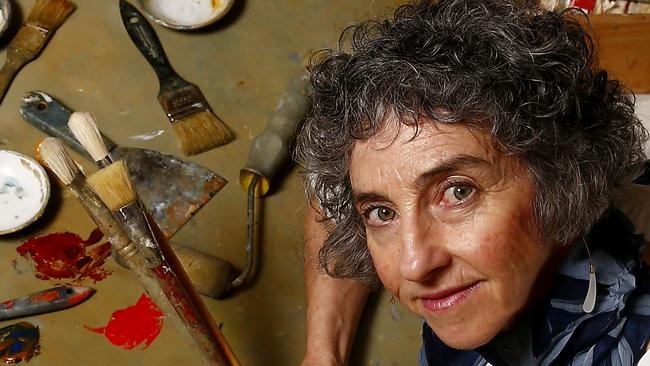
Local
Don't miss out on the headlines from Local. Followed categories will be added to My News.
It’s 11am on a weekday. Late model SUVs bearing Ladies Who Brunch slide past the wide-open doors of Michelle Belgiorno’s shared studio in a converted army shed in Mosman’s Headland Park Artist Precinct at Georges Heights.
Metres from the tall, corrugated iron walls of Michelle’s historic and artistically-cluttered building, Frenchy’s cafe is serving Croque Madame with Roasted Tomatoes to high-spirited, chatty customers. Inside the studio, there’s stillness. The three artists sharing the space have a “no audible music” rule so, in Michelle’s case, classical music is piping through her headphones as she concentrates on one of her latest pieces.
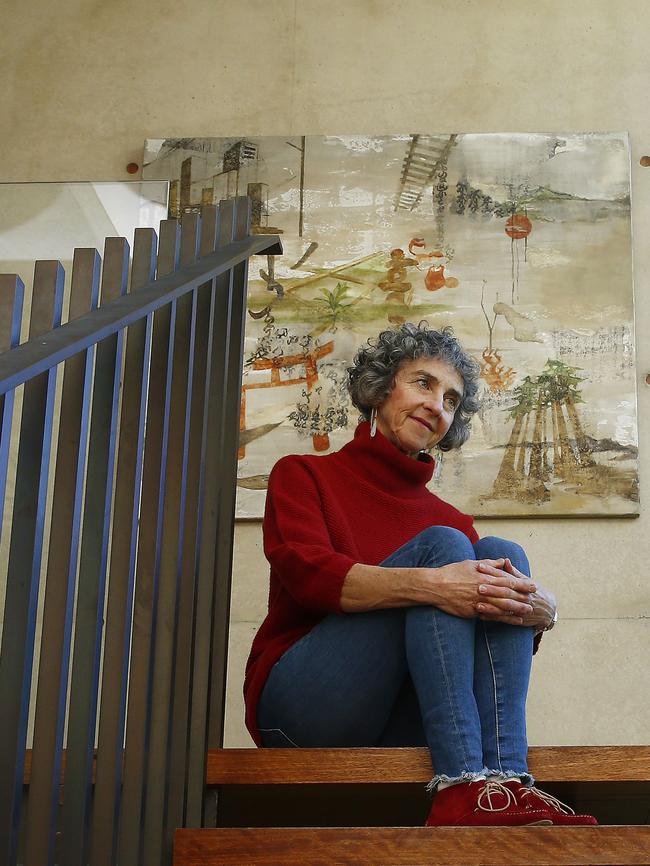
Painting in oil, Michelle’s brushstrokes have created a grove of Sydney red gums which appear to dance across the large artwork. “Music is a big part of my life and I love dance, so I was trying to capture the movement of the Angophoras that grow along the foreshore,” she says.
In contrast to the sprightly trees is the serene portrait of her husband Guido Belgiorno-Nettis which has earned her a slot among the finalists for this year’s $30,000 Portia Geach Memorial Award, a portraiture competition for women artists.
Titled “A Contemplative Moment”, the work features Guido with frangipani flowers from their Mosman home behind his ears. The fact the person her family calls “Action Man” was being quiet and reflective was “very unusual”.
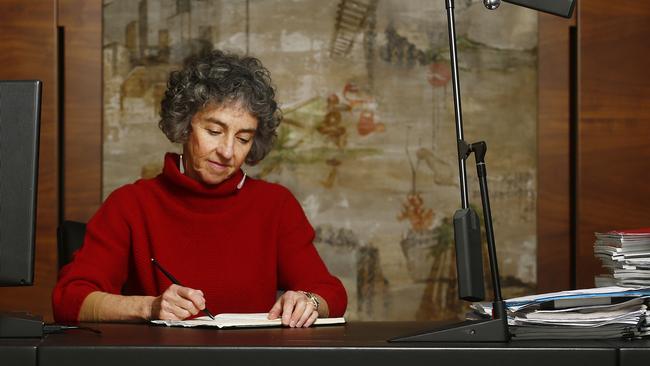
“He’s quite hyperactive and does a lot of sport, and often has a big smile on his face. But when I was drawing him, he was sitting there looking more serious.” For practical reasons, not smiling was important. “It’s not easy to paint teeth.”
Painting what she describes as a “tight, traditional portrait” of Guido is, for Michelle, also unusual. With Japanese art strongly influencing her style, her signature works often showcase landscapes painted on Washi, a traditional Japanese paper.
Fluent in the language, Michelle has regularly visited Japan over the past 40 years. Lately, she has come to terms with the coronavirus pandemic blocking her next trip.
Bright-eyed, energetic and consistently upbeat, she explains how travel bans and shutdowns have given her more time to focus on art and, specifically, Sydney landscapes. Pre-COVID-19, her evenings often weren’t her own.
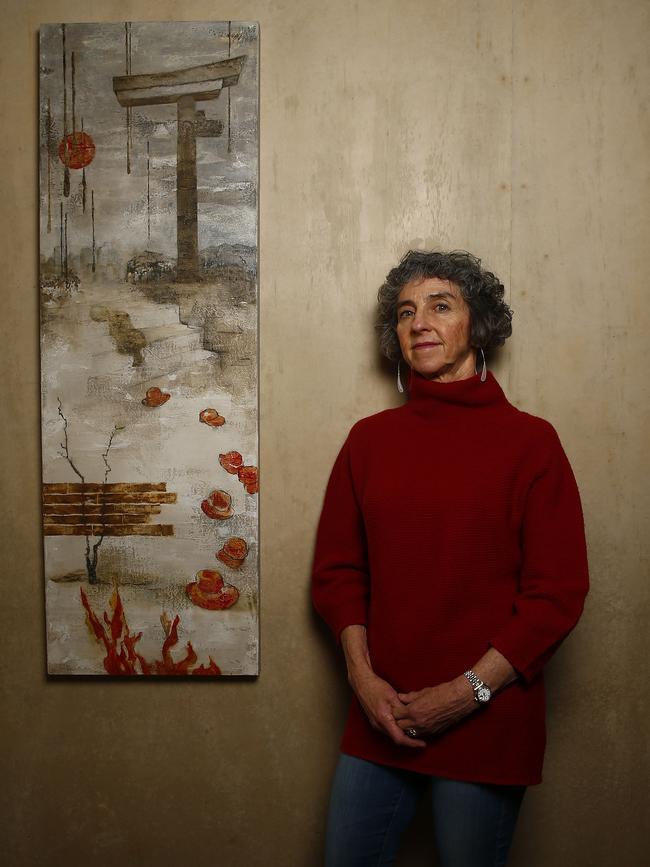
She has close associations with the Australian Chamber Orchestra (Guido is its long-term chairman) and the National Art School (she has a BA Fine Arts in Painting). She is also on the Board of Trustees for the Sir William Dobell Art Foundation. With the grace of a diplomat, Michelle found a new home at the school for the Dobell Drawing Prize when the Art Gallery of NSW stopped hosting it. The school received a record 788 entries for the 2019 prize, and this year’s entry deadline is 5 October.
“With COVID, all my evening engagements stopped,” she said. “So, I could go to bed early, get up early and come to the studio. Life has so many distractions, it’s sometimes hard to get the mental space to create.”
Michelle readily admits that she doesn’t fit the cliche image of “a poor, struggling artist”. That said, and given her husband’s high-profile success in business, does she feel people take her paintings less seriously than if they were produced in a garret?
“It’s something I’ve thought about,” she replies. “I just try to do my best and work with integrity. I try to create art that has something to say and it’s up to the viewer to think what they like about me and the art.”
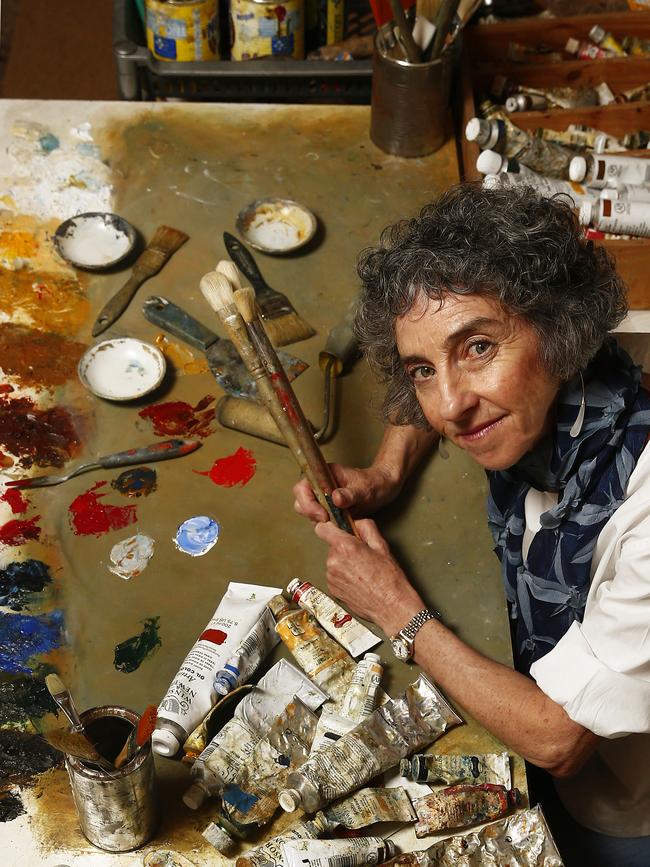
At the Headland precinct, the atmosphere in the rented studio is both professional and positively chummy. With bright sunlight streaming through high windows and finished artworks bedecking the walls, Michelle and the two other artists either work quietly – headphones in place – or discuss ideas and materials. At one o’clock, they share a communal lunch. Then back to work.
The creative process often draws on Michelle’s own experiences. The daughter of Hungarian immigrants and with an Italian father-in-law, she has an intense interest in this nation’s cultural diversity. Late last year, she sought what she describes as “a theme with significance – refugees.”
Deciding Mosman “wasn’t going to be a good location for that project”, she chose Liverpool which she sees as “a centre of multiculturalism”. Staged at the Casula Powerhouse, “Song Tree” incorporated the talents of migrant women who created tree leaves through needlework, embroidery and other techniques. Each leaf represented a song from the participant’s childhood.
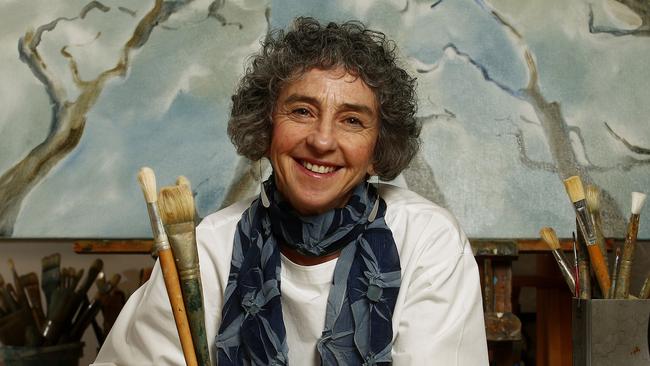
“For example, I met a wonderful group of Iraqi and Syrian women and invited them to embroider leaves. Lullabies and children’s songs are something all people can relate to, irrespective of culture or language. It was a metaphor for a tree having many branches, and Australia is like the single trunk with branches and leaves. Here we can all come to together.”
Other ambitious projects include “A Thousand Stitches of Hope” involving hundreds of Japanese and Australian women under Michelle’s direction embroidering motifs on 75 senninbari belts to commemorate the 75th anniversary of the Japanese midget submarine attack on Sydney Harbour in 1942. Traditionally such cloth belts were good luck pieces sewn by women and given to Japanese fighters going into battle.
“Women aren’t the instigators of war, they are often the victims,” Michelle said. “I wanted to find a way of expressing what the two sides had in common. No matter which side you’re on, it’s a painful and sad experience sending husbands, sons and brothers to war. The senninbari were stitched with love with the hope the men would return.”
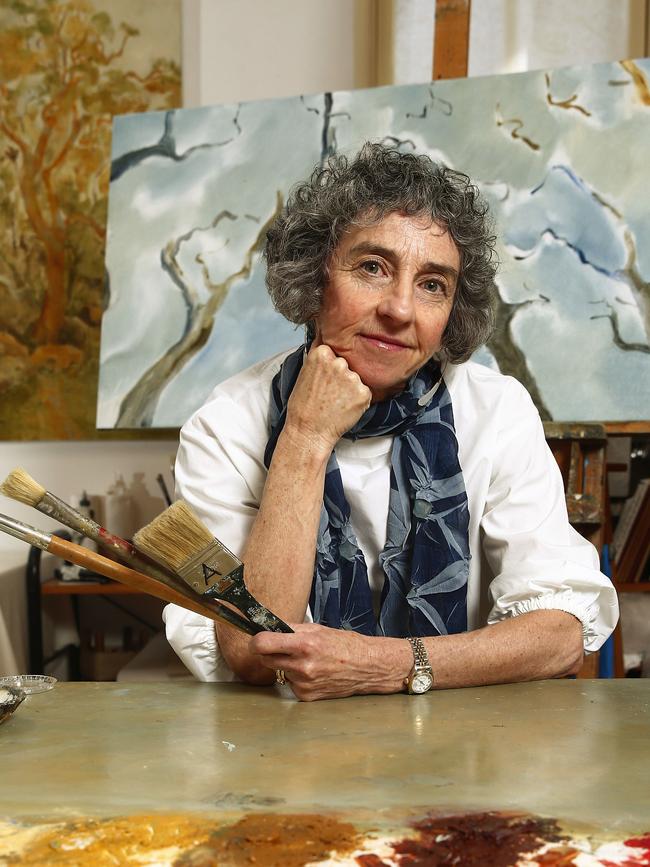
Initially not everyone applauded the idea. When Michelle invited a local woman who had been a teenager in the Second World War to participate in the project, the woman flatly refused, saying she didn’t want to commemorate “those dreadful Japanese.” Two weeks later, the woman approached Michelle, this time saying: “After 75 years, it’s time to let go of that anger and hatred. I want to join the project.”
Retelling the story, Michelle’s face lights up. “It was the epitome of what I really wanted to change. To reflect that it was a long time ago, and the two countries are now trading partners, friendly nations, and we need to be. It’s good to understand what drives behaviour but we need to move on and have an optimistic and positive relationship.”
One of Michelle’s projects that was met with immediate approval was the presentation two years ago of a 1726 Stradivarius violin to the Australian Chamber Orchestra (ACO) by husband Guido and herself. Described by ACO principal violinist Satu Vänskä as “one of the great violins of the world”, the instrument’s price tag remains a secret. What is no secret is the Belgiorno-Nettis family’s love of music.
Michelle sympathises with ACO’s musicians impacted by coronavirus shutdowns: “It’s been very difficult for those artists not having live audiences. The same for the Belvoir Theatre which we also support. Performing their craft is what they do.”
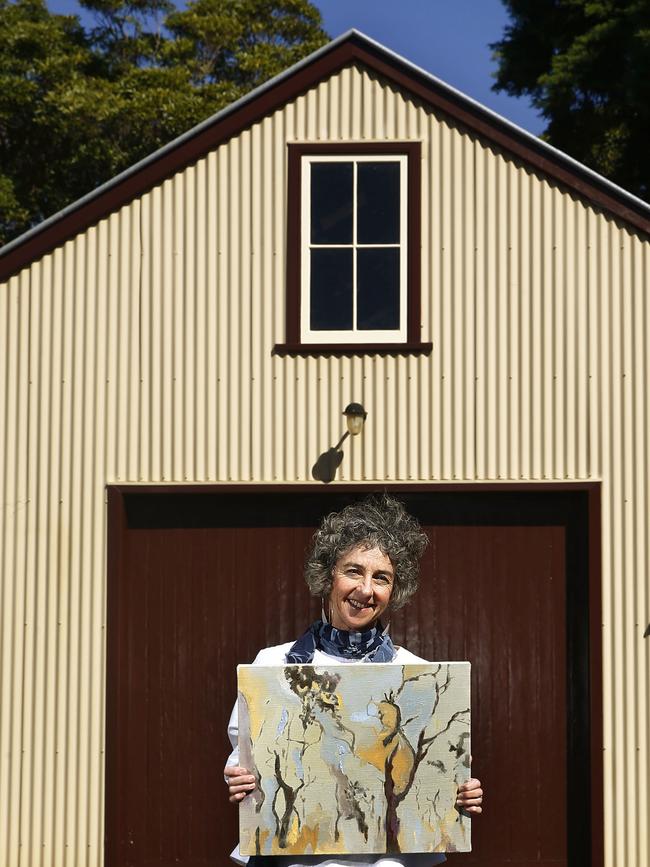
However, she quickly cites a recent ACO performance – after months away from the stage – at the Art Gallery of NSW as being “magnificent, with the musicians so energised by having a live audience.”
As a painter, an audience watching her bent over oils and washi paper isn’t a necessity, but having people enjoying the result is. At a July lunch with eight other “mature age” women graduates from the National Art School, the group discussed the importance (or not) of selling their art.
“I think it’s just a validation,” she says. “We live in a culture where, if people value something, then it’s attributed with a monetary value. If somebody wants to buy my art I’m always very happy but, more than selling the work, it’s actually sending it out into the world so that other people can enjoy it. That’s my main motive – to try and get it out there for other people to look at and enjoy.”
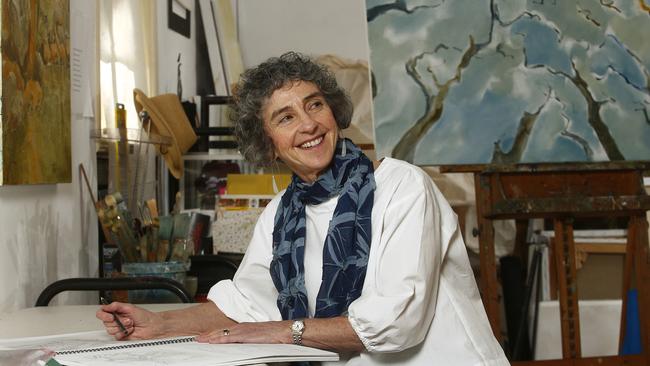
Michelle describes her art, whether melancholy images of Japanese theatre masks, the “fast trim ships” of Homer’s Iliad or wooded Australian landscapes, as minimalist. Certainly there’s no signature taking up real estate on the front of the paintings. Instead she signs the backs without the “Nettis” part of the hyphenated family name.
“I always thought why would you need two names, when one is more than adequate? I thought it was more accessible for Australians to have a single name, and ‘belgiorno’ is a beautiful word, it means ‘beautiful day’.”
From all appearances, every day at the Georges Heights artists’ community is a beautiful one.
(Exhibitions are staged regularly at the Headland Park precinct and, the pandemic permitting, the community hopes to hold the next one in Spring. Currently, visits to the studios are by appointment.
Michelle Belgiorno is also a judge in the Dobell Drawing Prize at the National Art School, which is open for entries until 5 October, 2020, for more information visit nas.edu.au/dobell-prize-22
